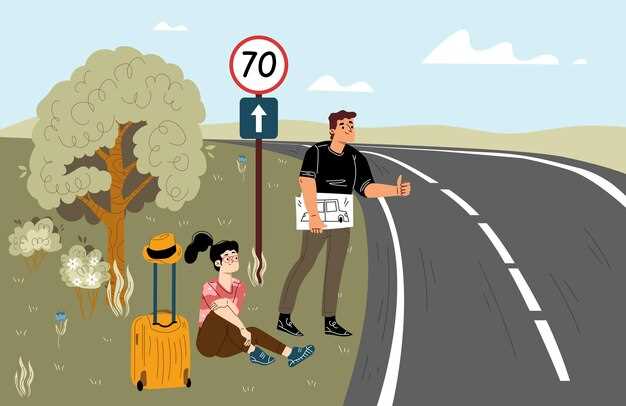
Navigating through stop-and-go traffic can be one of the most challenging aspects of riding a motorcycle. The constant changes in speed, along with the proximity of vehicles on all sides, require heightened awareness and a specific set of strategies to ensure safety.
In this article, we will delve into effective techniques that every rider can adopt to enhance their safety in congested conditions. Understanding the behavior of surrounding vehicles, maintaining proper spacing, and anticipating sudden stops are crucial elements to mastering the art of riding in heavy traffic.
Moreover, we will explore the importance of gear selection, body positioning, and situational awareness. By implementing these strategies, riders can significantly reduce the risks associated with stop-and-go scenarios, making their journeys not only safer but also more enjoyable.
Maintaining Proper Distance Between Vehicles
In stop-and-go traffic, maintaining a safe distance between vehicles is crucial for preventing collisions and ensuring smooth traffic flow. The general rule is to keep at least a two-second gap between your vehicle and the one in front of you. This distance allows sufficient reaction time in case the car ahead suddenly brakes or stops.
To measure this distance, select a stationary object along the road, such as a traffic sign or a pole. When the vehicle in front of you passes the object, count “one thousand and one, one thousand and two.” If you reach the object before completing the count, you are too close. Adjust your distance accordingly.
In addition to the two-second rule, consider increasing the gap in adverse weather conditions or when driving a larger vehicle. Rain, snow, or fog can significantly reduce traction and visibility, requiring more time to react. Similarly, larger vehicles have longer stopping distances due to their weight, making it essential to maintain a greater distance from them.
Be mindful of the traffic around you. If you find yourself surrounded by aggressive drivers or frequent lane changers, it might be wise to increase your following distance further. This extra space can provide a buffer against unexpected maneuvers from other vehicles, enhancing your safety on the road.
Utilizing advanced driver-assistance systems (ADAS) available in modern vehicles can aid in maintaining the correct distance as well. Cruise control functions, especially adaptive cruise control, can automatically adjust your speed based on the vehicles ahead, helping you stay within a safe range without constant manual adjustments.
Remember, maintaining a proper distance not only ensures your safety but also contributes to overall traffic efficiency. By preventing sudden stops and collisions, drivers can minimize delays and promote a smoother driving experience for everyone.
Understanding the Importance of Signaling and Rearview Checks

In stop-and-go traffic, maintaining clear communication with other drivers is crucial for safety. Signaling your intentions, whether changing lanes or preparing to stop, provides vital information to those around you. It helps prevent misunderstandings that can lead to accidents. Even in slow-moving conditions, the unpredictability of other vehicles makes signaling an essential part of defensive driving.
Checking your rearview mirrors is equally important. This action enables you to remain aware of your surroundings and anticipate the movements of vehicles behind you. In stop-and-go scenarios, cars may approach rapidly, and being aware of their position allows you to react appropriately. Regularly checking mirrors helps identify tailgaters and provides insights into when it might be safe to change lanes or merge.
Combining proper signaling with consistent rearview checks fosters a safer driving environment. It minimizes the chances of collisions and ensures that you remain in control of your vehicle at all times. Developing these habits contributes not only to your safety but also to that of other road users, creating a more predictable traffic flow.
In summary, the significance of signaling and conducting rearview checks can’t be overstated in stop-and-go traffic situations. These practices enhance awareness and communication, reducing the likelihood of accidents and ensuring a smoother travel experience for everyone on the road.
Adjusting Speed and Anticipating Sudden Stops
In stop-and-go traffic, the ability to adjust your speed and anticipate sudden stops is crucial for maintaining safety. One of the key strategies is to monitor the behavior of vehicles ahead of you. Watching brake lights and the spacing between vehicles can provide valuable clues about upcoming stops.
Maintain a safe following distance to give yourself ample time to react. A good rule of thumb is to keep at least two to three seconds of space between you and the vehicle in front. This distance may need to be increased during adverse weather conditions or when driving larger vehicles.
When you notice traffic beginning to slow down, begin to decelerate smoothly rather than slamming on the brakes. This gradual approach not only reduces the risk of rear-end collisions but also ensures that those behind you have adequate time to respond to your speed change. Implementing gradual braking allows for a smoother flow of motion and enhances overall safety for everyone on the road.
Additionally, be aware of potential distractions that could impede your reaction time. Keeping your focus on the road and minimizing distractions will help you react quickly to sudden changes in traffic flow. Always be prepared for the unexpected, as drivers may abruptly stop or slow down without warning.
Utilizing your engine to assist in the deceleration process can also be beneficial. Downshifting to a lower gear when facing gradual stops can help slow your vehicle down and reduce reliance on brakes, which can overheat and become less effective during heavy traffic.
Lastly, staying calm and composed in slow-moving traffic can aid in better decision-making. If you can anticipate the flow of traffic and respond to it rather than react to each individual stop, you will enhance your safety and that of others on the road.